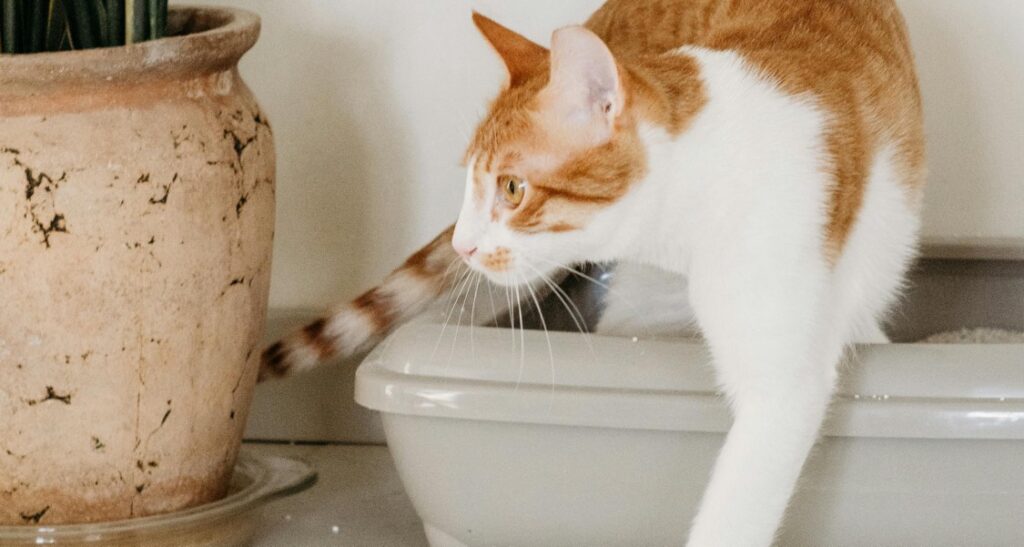Cats are creatures of habit. Even the smallest changes to their environment can disrupt their routines and lead to unwanted behaviors. This is especially true when it comes to their litter box. If you’ve ever considered switching your cat to a new type of litter—whether for health reasons, sustainability, or better odor control—the process requires patience and a thoughtful approach.
When choosing a new litter, selecting a high-quality option that aligns with your cat’s needs can make the transition smoother. Low-dust litters, like those offered by Boxiecat, are not only better for your cat’s respiratory health but also for maintaining a cleaner home. However, even with a premium litter, a gradual transition is key to ensuring your cat feels comfortable with the change.
Why Transitioning Litter Gradually is Important
Cats are highly sensitive to their environment, and sudden changes—like replacing their litter—can lead to litter box avoidance. This is not just a behavioral issue but can also cause stress-related health problems, such as urinary tract infections.
There are many reasons you might consider switching litter. Dust-free options are ideal for cats with respiratory issues or allergies. Biodegradable litters cater to environmentally conscious pet owners, while scented options might appeal to those prioritizing odor control. Whatever the reason, transitioning slowly is key to a successful switch.
Step-by-Step Guide to Transitioning Your Cat to a New Litter
Step 1: Start with the Right Replacement Litter
Before you begin the transition, research the type of litter you want to switch to. Consider your cat’s preferences—do they prefer finer granules, or are they open to larger, more textured litter? Choosing a high-quality, dust-free litter can help ensure your cat’s comfort during the transition while also addressing cleanliness and health concerns. Opt for a product that aligns with your cat’s needs and provides a smooth adjustment.
Step 2: Mix the Old and New Litter
The key to transitioning your cat is to introduce the new litter gradually. Start by mixing 25% of the new litter with 75% of the old litter. This allows your cat to adjust to the new scent and texture without feeling overwhelmed.
Keep the litter box in its usual spot during this time to minimize stress. Avoid introducing other changes, such as moving the box or using a new cleaning routine, during the transition.
Step 3: Observe Your Cat’s Behavior
During the transition, monitor your cat closely. Look for signs that they’re using the litter box as usual, such as regular digging and burying behaviors. If you notice avoidance—like your cat using other areas to relieve themselves—it may be a sign to slow the process.
If your cat shows persistent resistance, you can pause and revert to a higher ratio of the old litter before gradually trying again.
Step 4: Gradually Increase the New Litter
Over 7–10 days, continue increasing the proportion of the new litter while reducing the old. By the end of the transition, the box should contain 100% of the new litter.
Patience is key here—some cats may take longer to adjust. It’s better to go at their pace than to risk creating a negative association with the litter box.
Step 5: Maintain Consistency
Once your cat has fully transitioned, stick with the new litter. Cats thrive on routine, and constant changes to their environment can lead to unnecessary stress. Make sure to clean the litter box regularly and keep it in a location where your cat feels safe and comfortable.
Tips for a Successful Transition
- Use Positive Reinforcement: Praise or reward your cat when they use the litter box during the transition. This helps create a positive association with the new litter.
- Keep a Backup Litter Box: If possible, set up a second box with the new litter, giving your cat the option to explore it at their own pace.
- Choose Unscented Options During Transition: Cats are sensitive to strong scents, so opt for unscented litter initially to avoid overwhelming them.
A Word from an Expert
Josh Wiesenfeld, CEO and founder of Boxiecat, emphasizes the importance of a gradual and cat-focused approach. “The key to transitioning litter successfully is to prioritize your cat’s needs and adjust gradually. Cats thrive on routine, and a patient, step-by-step approach can prevent unnecessary stress or litter box issues.” His advice highlights why a thoughtful transition is essential for keeping your cat happy and healthy.
Common Challenges and How to Overcome Them
Litter Box Avoidance
If your cat refuses to use the litter box, slow down the transition process. Mix in less of the new litter and try again gradually.
Multi-Cat Households
Transitioning multiple cats at once can be tricky, as each cat may adjust differently. Consider providing a mix of litter boxes with the old and new litter to accommodate individual preferences.
Health Concerns
If your cat exhibits signs of stress, such as not eating, hiding, or vocalizing excessively, consult your veterinarian. These may be indications of a medical issue rather than a reaction to the litter.
Helping Your Cat Adapt Comfortably
Transitioning your cat to a new type of litter doesn’t have to be stressful—for you or your pet. By taking it slow, observing your cat’s behavior, and sticking to a consistent routine, you can make the process seamless.
A dependable product, like Boxiecat, can simplify the process by addressing common concerns such as dust and odor, while maintaining your cat’s comfort. Remember, the goal is to prioritize your cat’s well-being while keeping their litter box habits intact. With a gradual approach and patience, you’ll ensure a successful transition and a happier feline friend.

